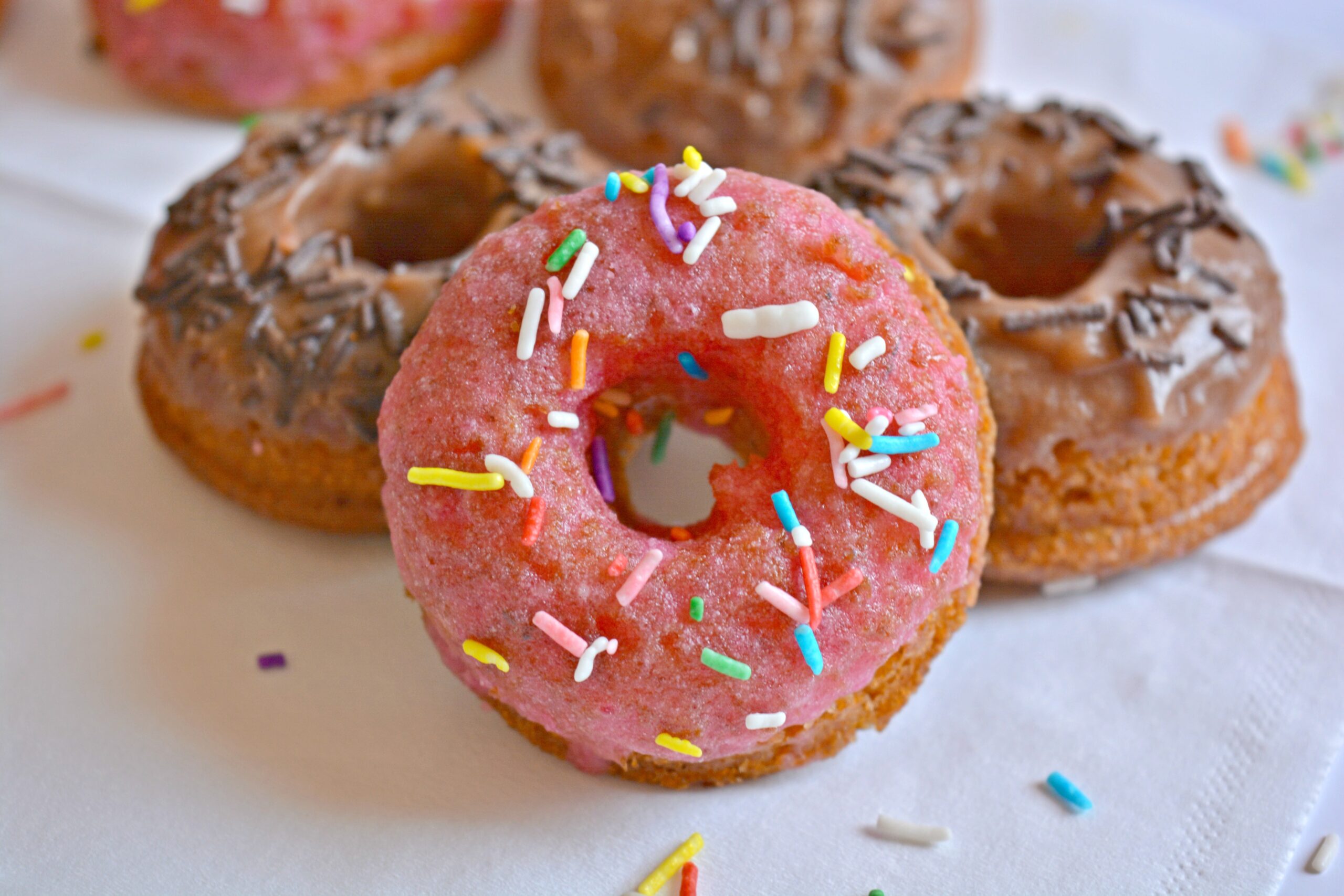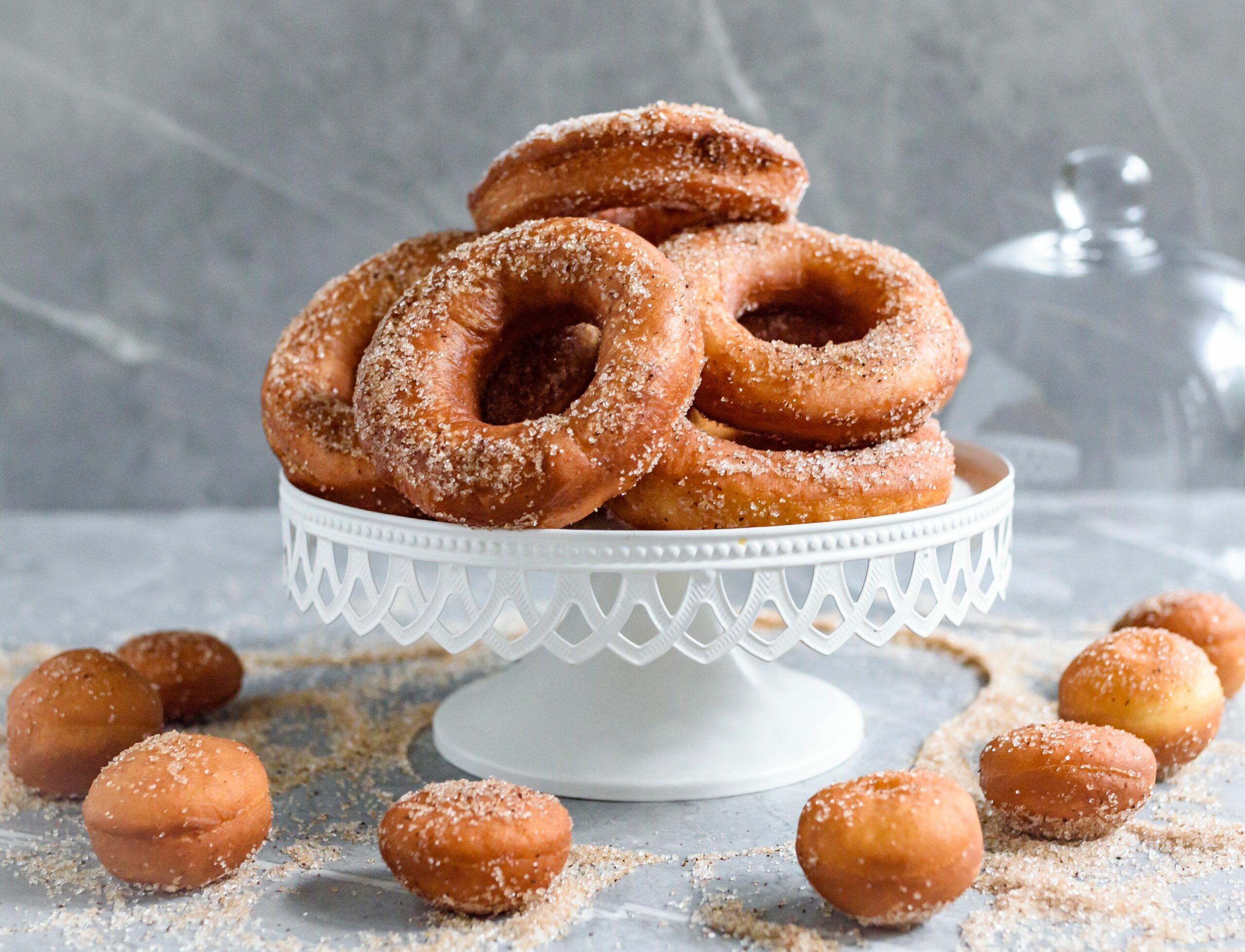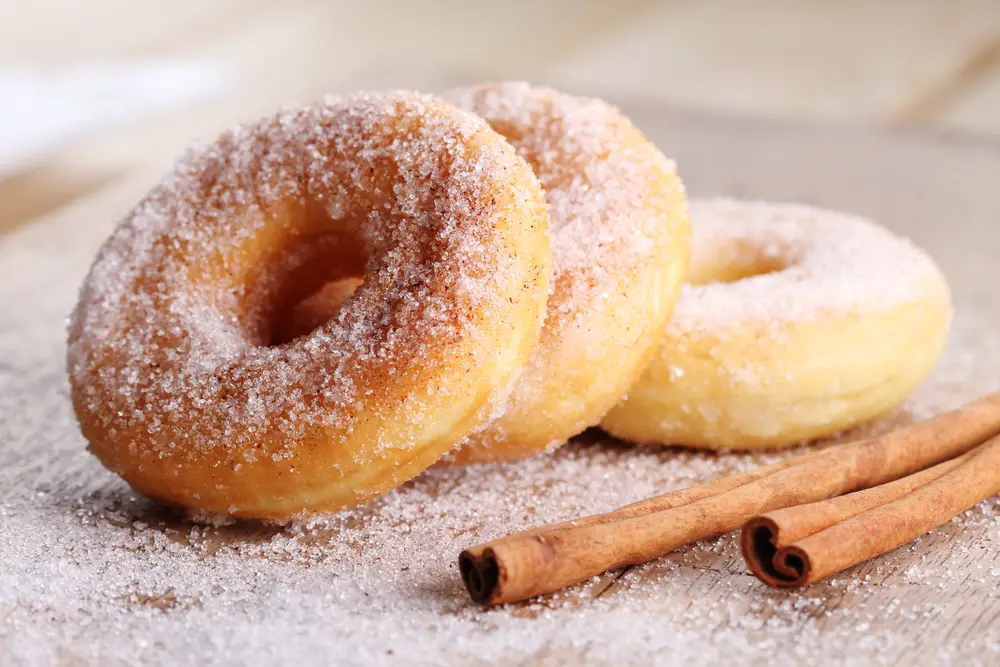I think it is safe to assume that everybody likes doughnuts. At least I have never met anyone who didn’t. However, with so many varieties available in the shops, how many of us have tried making doughnuts at home? Yet, they are not that difficult to make.
Read on to find a simple recipe for homemade doughnuts. We have also included information about the history of these sweet delicacies, some interesting facts about them as well as nutritional facts.
A brief history of doughnuts
Although nobody can pinpoint the exact time or place where doughnuts originate from, there are some key moments in their timeline. One of them is the Dutch olykoeks or oil cakes in English.
Some records show the Dutch were making balls of cake fried in pork fat until golden brown as early as the mid-19th century. When the Dutch immigrants settled in the United States, the oil cakes mixed with influences from other cultures and created the donuts we love today.

Why are they called doughnuts?
If the modern doughnuts are based on the Dutch oil cake, then why are they called doughnuts and not oil cakes? Just like there is no clear origin of the delicacy, there is no clear origin for the name either.
Some have suggested that it comes from the early doughnuts having fruit or nuts inside them. Others say that it refers to another popular shape of oil cakes, which looked like dough knots.
Doughnut or donut?
You might have seen both of the spellings used, but is one more acceptable than the other. The answer is no. Many people were using the shortened version by the early 20th century. Today, they are used interchangeably, and both are accepted.
Where did the shape come from?
The reason the Dutch used to stuff the donuts with fruits, berries, or nuts was that the center took longer to cook. Had it not been filled with something that didn’t require cooking, it would have remained uncooked and not so tasty.
The idea to cut out the center came from an American captain, Hansen Gregory. He figured out that by removing the center, the surface area exposed to the oil was larger and made the doughnut cook faster. It also got rid of the uncooked center.
Modern Doughnuts
Today there are hundreds, if not thousands, of versions of the original humble dough knot. Large chains such as Krispy Kreme and Dunkin Donuts have brought out dozens of varieties. Small boutique shops have added their variations to the mix.
So whether you fancy a doughnut filled with strawberry jam, custard and cream, or even maple and bacon, you are bound to find one to satisfy your taste buds. To find out more about the history of doughnuts, visit The Spruce Eats.
Five fascinating facts about donuts

- The donut capital of the world is Winston-Salem in North Carolina. It is the location where Vernon Rudolph opened the world’s first Krispy Kreme shop in 1937.
- During the First World War, the Salvation Army baked donuts for the soldiers to boost morale. Some years later, during the Great Depression in 1934, the Salvation Army helped to feed the homeless with doughnuts and coffee.
- Doughnuts were given to the soldiers in the Second World War, too. The American Red Cross had trucks fitted with doughnut machines and gramophones. Brave women volunteers would drive them to the front lines where they would make fresh doughnuts and play hits from the day.
- We are all used to seeing police officers on TV and in films devouring doughnuts. But why? In the 1940s and 1950s, there weren’t many places where police on night patrol could grab a bite to eat. So they frequented places that were open such as bakeries serving doughnuts.
- Americans have two days in a year when they can celebrate doughnuts. The first is the first Friday of every June, which is National Doughnut Day. It started in 1938 to celebrate the “Doughnut Lassies” of WWI. The other is the National Doughnut Appreciation Day celebrated annually on November 5.
For lots more fun facts about doughnuts, check out the Fact Retriever website.
So what ingredients do you need to make doughnuts?
There are only eleven ingredients in this recipe and most of them you probably find in your kitchen already. The recipe we have shared here makes eighteen doughnuts, which is a perfect number for a small gathering. We found this recipe on All Recipes.
You will need:
- 2 tbsp white vinegar
- 2 tbsp shortening
- ⅜ cup milk
- ½ cup white sugar
- ½ tsp vanilla extract
- ½ tsp baking soda
- 2 cups sifted all-purpose flour
- ¼ tsp salt
- 1 egg
- 1-quart oil for deep frying
- ½ cup sugar powder (also called confectioners’ sugar) for dusting
Step by step on how to make doughnuts
There are only seven steps to make these easy and delicious doughnuts. You will need three separate mixing bowls and a skillet to fry the doughnuts in. We recommend serving them when they are still warm. However, they taste just as good served cold.
- Start by stirring together milk and vinegar and leave it to stand for a few minutes until the mixture has thickened.
- In a mixing bowl, cream together sugar and shortening until smooth. Then beat in egg and vanilla. Make sure they are well blended.
- In a large bowl, sift together flour, baking soda, and salt. Stir in the sugar mixture, alternating with the milk mixture. You can use a handheld or a stand mixer for the process.
- Once mixed in, roll the dough out onto a flat floured surface to ⅓ inch thickness. Use a doughnut cutter to cut the dough into donuts. If you don’t have a doughnut cutter, you can use a larger cookie cutter for the outside and then a smaller one to make the doughnut holes. Leave to stand for ten minutes in a warm place.
- Take a deep skillet and heat the oil to 375 degrees F (190 ℃). You can also use a deep frying pan if you don’t have a skillet. If you own a deep-fryer, you can, of course, use that to make your doughnuts. Use a thermometer to check the oil is hot enough.
- Fry the doughnuts in batches in hot oil until golden. Turn over once during frying. When ready, take them out with a slotted spoon, place them on a cooling rack, and drain excess oil on paper towels. Instead of a cooling rack, you can also place them on a baking sheet.
- Add a dusting of sugar powder while the doughnuts are still warm. You are ready to serve.
Some alternative suggestions
Instead of powdered sugar, you can also try different flavors such as adding sprinkles, cinnamon sugar, nutmeg, ground cinnamon, or cocoa. Maybe try giving them a vanilla glaze or a chocolate glaze or serving them with heavy cream.
If you would like to get a little more experimental with your doughnuts, we recommend this baked lemon and blueberry recipe. There is a link to the ingredients used underneath the video.
Or if you prefer doughnuts without holes, try this recipe from The Dough Hook. The ingredients differ slightly as this recipe includes butter (you can use unsalted butter if you prefer) and a yeast mixture.
Nutritional Information
While we probably don’t want to think about calories when we are eating doughnuts, it is still good to know their nutritional values. Here are some key values for the average homemade fried and baked doughnuts.
| Fried Doughnut | Baked Doughnut |
| 200 calories | 160 calories |
| 25g carbs | 21g carbs |
| 11g fat | 2g fat |
| 3g protein | 3g protein |
How does that compare with the values of other foods? Here are some average values we can compare the doughnuts to.
| Food | Calories |
| A small portion of French fries | 230 |
| Cheeseburger | 290 |
| Mars bar | 260 |
| A bowl of vanilla ice cream | 120 |
For more nutritional values of the homemade doughnut, click for fried doughnuts or baked doughnuts.
Conclusion
In this article, we have shared with you three different recipes for doughnuts, which are all very simple to make. However, there are many more others to try. There are so many recipes to choose from that you could easily try a different one every day! Maybe you can even experiment with your own flavor combinations.
We hope this article has answered your questions about doughnuts. However, if you still have questions, you can write them in the comments section. You can also check out the frequently asked questions.
FAQ
Is it better to fry or bake doughnuts?
Nutritionally yes, baked doughnuts have fewer calories and fat compared to fried doughnuts because you are not using any fat when cooking them. Regarding taste, the answer is debatable. To read more about frying vs baking, click here.
What is the best flour to use for doughnuts?
The best flour for doughnuts is all-purpose flour or cake flour. Cake flour has less gluten than all-purpose flour. It is also possible to make them with gluten-free flour as in this recipe.
What oil do bakeries use to fry donuts?
If you use the wrong oil for frying your doughnuts, they can leave an oily aftertaste when you eat them. To avoid this, use a neutral oil such as canola or sunflower oil. Canola oil is especially good because it has a mild flavor. It also has a high smoking point, making it ideal for frying doughnuts.

